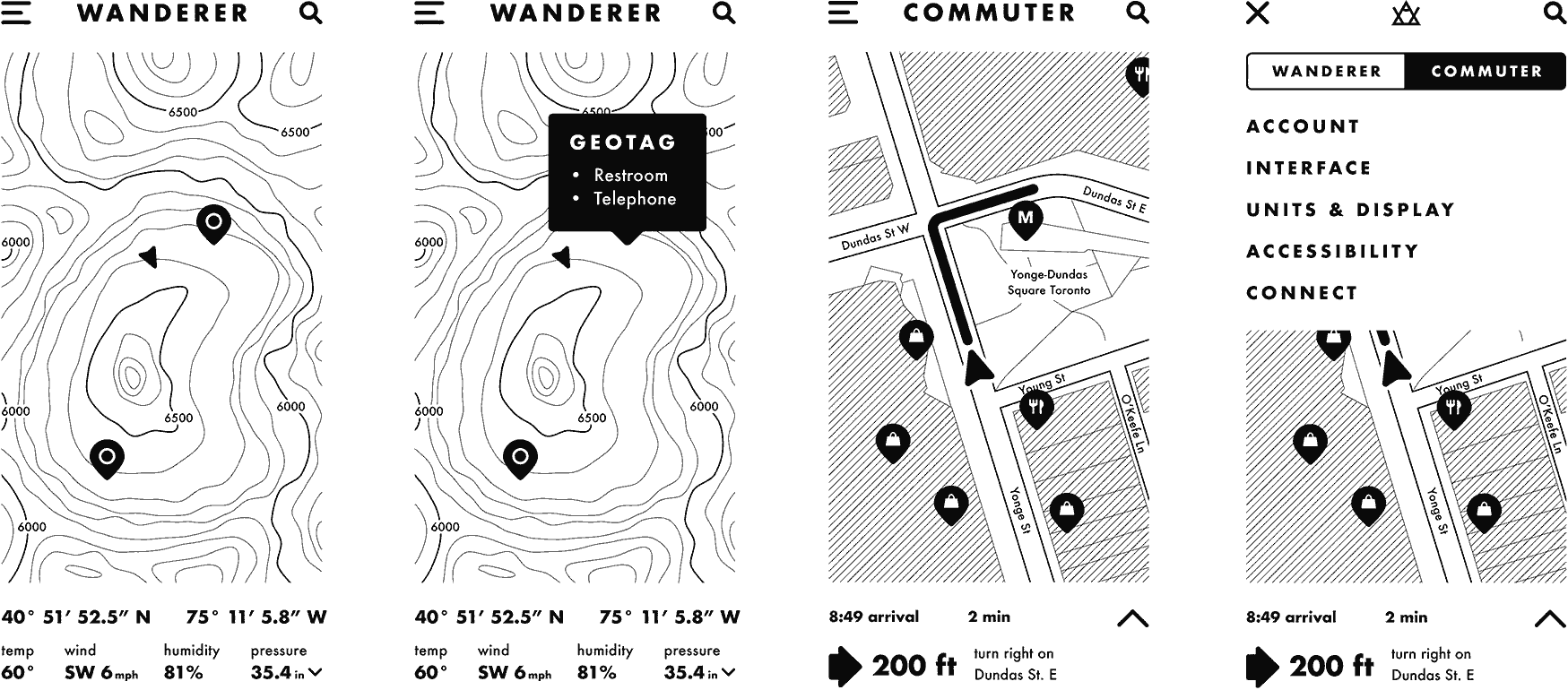wandr
Wandr is a personal project based around a futuristic UI idea — interactive tattoos. It allows the wearer to access instantly available navigation wherever they go, whether they're a city traveler or an explorer.

something for everyone
WANDERER MODE:
In the wilderness or in natural locations such as trails, Wandr will automatically enter into Wanderer mode. A wanderer can see their surroundings updated in real-time on their skin in the form of a topographical or a trail map. Property owners will have the ability to add features such as trail lines, expandable annotations, and markers which will be accessible by users who are exploring the land. Advanced pathfinder features such as coordinates and climate information will also be visible. The map can be zoomed and scrolled via touch input.
COMMUTER MODE:
In urban or suburban areas, Wandr will automatically enter Commuter mode. Commuter mode functions in a similar way to traditional GPS navigation apps, allowing a street view with information such as current location and address, expandable information on nearby shops and restaurants, and the ability to navigate by walking, driving, or transit. Wandr will connect with consumer apps such as Yelp, and also be able to synchronize with services like Google Maps, allowing active navigation to transfer between Wandr and the user's mobile phone.

extreme design limitations
The basis of Wandr's aesthetic style is simple: no colors, and no shades — only black ink. For an idea based around a tattoo, I felt that these limitations could not be broken. How, then, would I be able to create a user interface that had sufficient clarity and visual hierarchy? In the end, my solution for this was to embrace the monochromatic style to create a super-minimal aesthetic, using negative space, solid shapes, and lines to create the illusion of intermediate shades.
Within those boundaries, I found visual inspiration in both tattoos and maps — specifically the type of old-school topographic maps you might expect to find in a national park, or on the inside cover of a fantasy novel.
